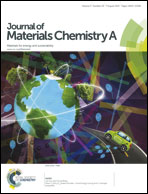Catalytic reduction of NOx by CO over a Ni–Ga based oxide catalyst†
Abstract
The removal of nitrogen oxides (NOx) originating from human activities continues to be a challenge for environmental protection due to the lack of an efficient method to capture and convert nitrogen oxides. Here, as a typical example of a bifunctional catalyst, a new low-cost Ni–Ga based oxide catalyst with an inverse spinel structure was developed for NO removal. It exhibits the synergetic catalysis properties of Ni and Ga: strong NO capture properties from the Ni species and applicable NO catalytic conversion from both the Ni and Ga species. The NO removal by the Ni–Ga based catalyst is strongly dependent on the Ga ligand environment. The largely inverse spinel structure with an inversion parameter of 92% and the tetrahedral preference of Ga3+ greatly contribute to the high performance for NO conversion due to the electron transfer occurring easily in the low coordination environment of the Ga ions. The electron transfer process in the Ni–Ga based catalyst can be further activated by Zn doping, increasing the catalytic ability for NO conversion. Our results open up a new route for designing efficient catalysts, combining the strong gas capture properties of a specific element with high catalytic NO conversion properties, by constructing an appropriate element ligand environment.


 Please wait while we load your content...
Please wait while we load your content...